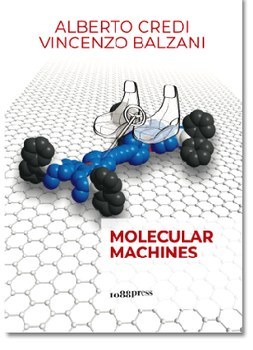The LEAPS Mission
Our objectives in frontier research
Movement is one of the central attributes of life, and a key feature in many technological processes. While artificial motion is typically provided by macroscopic engines powered by internal combustion or electrical energy, movement in living organisms is produced by machines and motors of molecular size that typically exploit the energy of chemical fuels at ambient temperature to generate forces and ultimately execute functions.
In the past two decades, the progress in several areas of chemistry, together with an improved understanding of biomolecular machines, has led to the development of a large variety of wholly synthetic molecular machines. Although these systems have the potential to bring about radical innovations in several areas of technology and medicine, a significant research effort still needs to be done to make molecular devices that can effectively and continuously convert energy from a source into directed motion, and use such motion to carry out a useful task.
The goal of the LEAPS project is to make new prototypes of molecular motors powered by light energy, and to use them to perform functions that include controlled transport of molecules at the nanometer scale, and mechanical actuation at the macroscopic scale. These systems are rationally designed on the evolution of previously reported working prototypes, and are based on synthetically affordable compounds.
The demonstration of such functionalities would not only be a landmark accomplishment in chemistry and nanoscience, but also open up stimulating scenarios in nanotechnology, materials science, and nanomedicine. On the one hand, the development of artificial nanomotors that can use light energy to displace molecules can lead to radically new routes for solar energy conversion and medical phototherapies. On the other hand, devising novel photosensitive materials capable of macroscopic mechanical actuation has evident technological significance in fields such as robotics and prosthetics. Reaching these goals will constitute significant steps forward towards the real-world exploitation of chemical systems that, until just a few years ago, were considered no more than laboratory curiosities.

For more information about the topic, take a look at the following book, freely available in PDF or as e-book:
Molecular machines
Alberto Credi, Vincenzo Balzani
1088press
88 pages
Alma Mater Studiorum - Università di Bologna
Published online: April 2020
ISBN: 978-88-31926-18-8
ISBN-A: 10.978.8831926/188
DOI: 10.12878/1088pressbit2020_1
The design and construction of machines and motors of molecular size is a stimulating scientific challenge and a primary objective of nanotechnology. During the past thirty years, chemists have taken up this challenge and learned how to make and operate simple nanoscale machines. Although these tiny devices are not yet part of our everyday life, we are approaching a new industrial revolution that opens up radically new perspectives for applications in catalysis, smart materials, robotics, information technology, and medical diagnostics and therapy.
Click here to read the full book